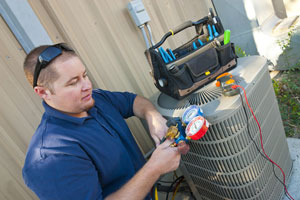During an HVAC system installation, there are several important technical elements that must be taken into account to ensure the system is correct for your home and that it will work at its best. The Air Conditioning Contractors of America (ACCA) publishes three technical references that provide all the guidance, procedures, and best practices that your HVAC professional will need for a successful installation. Here is a brief introduction to Manuals J, D, and S, and what they cover.
Manual J — Residential Load Calculation
Manual J provides all the technical guidance necessary for a residential load calculation. Each building has a heating or cooling load, which is the amount of heating or cooling needed to keep the inside spaces at the temperature the residents prefer. A load calculation takes into consideration multiple thermal and physical characteristics of the building to determine its load. Once your HVAC professional knows the building's load, he can easily guide you to the type of HVAC equipment that has the functional capacity to satisfy that load.
Manual D — Residential Duct Systems
Manual D covers the ductwork in residential settings. The HVAC system ductwork is the network of pipes that directs heated or cooled air from your HVAC equipment to the inside of your home. Ductwork must be properly designed, installed, sealed, and insulated to ensure it carries conditioned air without loss of energy and without wasteful air leaks.
Manual S — Residential Heating and Cooling Equipment Selection
Manual S includes detailed technical specifications and performance information on multiple brands of air conditioners and heat pumps. This type of data helps your HVAC pro choose the best equipment for your particular needs. Manual S also provides additional information on equipment sizing, ventilation, and air distribution.
With more than three decades of experience in the HVAC industry, Air Assurance brings top-quality sales, installation, maintenance, and repair to customers in Tulsa and the neighboring communities. Contact us today for more information on Manuals J, D, and S and how these important technical references are used to ensure the best possible HVAC performance in your home.
Our goal is to help educate our customers in the Tulsa and Broken Arrow, Oklahoma area about energy and home comfort issues (specific to HVAC systems). Credit/Copyright Attribution: “Tang Yan Song/Shutterstock”



